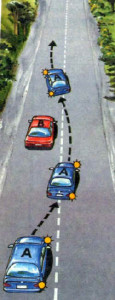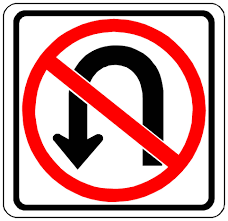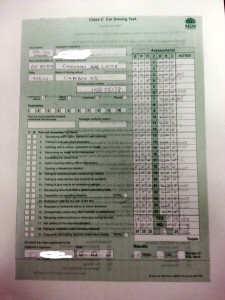Driving Lesson Distractions and Crash Risk
Distractions that divert attention from driving increase your risk of crashing.
Recent research suggests that at least 14 per cent of all crashes involve the driver being distracted by something inside or outside the vehicle. As many as one in ten fatalities have been directly attributed to driver distraction. Yet even though surveys have indicated that 98 per cent of people believe that using a mobile phone while driving, for example, is very dangerous, 28 per cent of people admit to doing it themselves.
Distractions from outside the vehicle account for about 30 per cent of the distractions that lead to crashes. And distractions from within vehicles account for up to about 36 per cent (the remaining 34 per cent is unknown).
Typically, the two biggest distractions inside the vehicle are other passengers and adjusting the sound system. Research has also shown that drivers using mobile phones and Global Positioning Systems (GPS) while driving are also much more likely to be involved in crashes. Text entry into a GPS unit while driving can be extremely dangerous. Sending and receiving text messages on a mobile phone while driving is also extremely dangerous, and is also illegal.
Passengers and crash risk
Other passengers can have quite an influence on your driving. Young drivers have a higher crash risk when travelling with passengers of much the same age than when travelling alone. For parents, distractions can come from trying to attend to young children in the back seat of the car when driving. However, regardless of the driver’s age, the fact remains that any distraction that takes away your attention to the driving task significantly increases your chances of becoming involved in a crash. When you are distracted or your attention is divided, you are more likely to make mistakes. This means that you should avoid or minimise distractions when you drive, particularly when you are engaged in complex driving actions.
Reducing distractions means reducing crash risk

While you can’t do much about distractions from outside your vehicle when you are driving, you can reduce sources of distraction inside your vehicle. This will help reduce your crash risk. Unfortunately, while modern cars have many new active and passive safety devices, they are also increasingly becoming the source of significant internal distractions. However, doing simple things like:
Fitting your car with a hands-free mobile phone car kit. This can help if you must take calls while driving. However, it would be much better to find a safe place to stop and take a call so that you are not distracted in any way when driving. Research has shown that using a hands-free mobile phone can also be a dangerous distraction, particularly in complex traffic situations.
Note: Learner, P1 drivers and provisional riders are banned from using phones in any way, including hands-free types. You must not use any function of a mobile phone while driving or riding. This includes phones in the hands- free mode or with the loudspeaker operating, or sending text messages.
Ensuring that mobile devices that can also function as GPS units are properly mounted in a cradle.
Only entering text into devices, ie GPS, mobile phone etc when you are stopped in a safe location.
Turning off the radio or stereo, particularly in new or challenging traffic situations.
Collecting loose items inside the vehicle and putting them in a bag or box or in the boot.
Telling passengers to avoid distracting you.
Note: P1 drivers under the age of 25 you must not drive between the hours of 11pm and 5am with more than one passenger under the age of 21. P1 riders are prohibited from carrying a pillion passenger.
RMS can grant an exemption from peer passenger restrictions if exceptional circumstances are demonstrated. Further information on how to apply for a passenger restriction exemption is available on the Application for Exemption: Peer-Passenger, One-Passenger or Prohibited Vehicle Condition available on our website or at a registry. An application fee will apply.
Only adjusting the radio, digital music devices, or load CDs, when stopped if you cannot get help while driving from a front seat passenger
In addition to demerit points, a heavy fine applies for drivers caught using or answering a hand-held phone while driving.
Geared reports on the top distractions turning the heads of drivers.
Tweet
Facebook Share
Google Plus Share
NSW Police Traffic Services Commander, Chief Superintendent John Hartley, says there’s little doubt that distracted drivers can cause traffic problems and road crashes.
He explains that there are many distractions on the road, including more and more traffic.
Additionally, drivers now also have to contend with new or more affordable technologies like smart phones, MP3 players, GPS devices, and in-car DVDs, which can act as a distraction.
Here are some of the worst driver distractions:
Mobile phones (talking and texting)
Using a mobile while driving can increase the risk of a collision by four times, according to several studies. Sending a text message is even worse.
Learner and P1 drivers are not allowed to use ANY function of a phone (including hands-free) while driving.
P2 drivers may only use a mobile phone to make or receive a call, or use the audio player if the phone is secured in a fixed mounting. If you are a P2 driver, and your phone is not in a mounting, to answer your phone it must not require you to touch or manipulate the phone in any way.
All other functions such as texting, video messaging, online chatting, reading preview messages and emailing are not allowed. The new laws make it clear that a driver in a moving or stationary vehicle (unless parked) MUST NOT HOLD a phone in his or her hand other than to pass the phone to a passenger.
Adjusting vehicle settings
This is the most common bad driving habit because many people don’t realise it’s dangerous to fiddle with the radio, air-conditioning or windows while driving.
“Crashes often occur as a result of only a moment’s inattention,” says Commander Chief Superintendent John Hartley.
“While you’re changing the CD or skimming through songs on your mp3, your full attention isn’t on the road and [it is] placing you at risk of a crash.” The best idea is to make any adjustments before you set off or put your mp3 on shuffle before you begin your journey.
Passengers
Young drivers have a greater risk of crashing when they have friends in the car.
The stats also tell us that there’s more chance of causing a fatal crash when you have two or more friends in the car, especially male passengers. However, the risk is reduced when carrying an adult or a child, compared with carrying no passengers.
Eating, drinking and smoking
Aside from the obvious dangers of drink-driving, even sipping on a non-alcoholic drink takes your focus off the road.
An American study has found that eating a cheeseburger can be more distracting than talking on a mobile. And the risk of causing a crash is just one more reason not to smoke!
External distractions
As if there wasn’t enough happening inside the car, there are lots of distractions outside too. Make sure you look out for other drivers and pedestrians, while trying to block out the roadside billboards, shops and all sorts of unexpected or interesting things going on in the streets.



